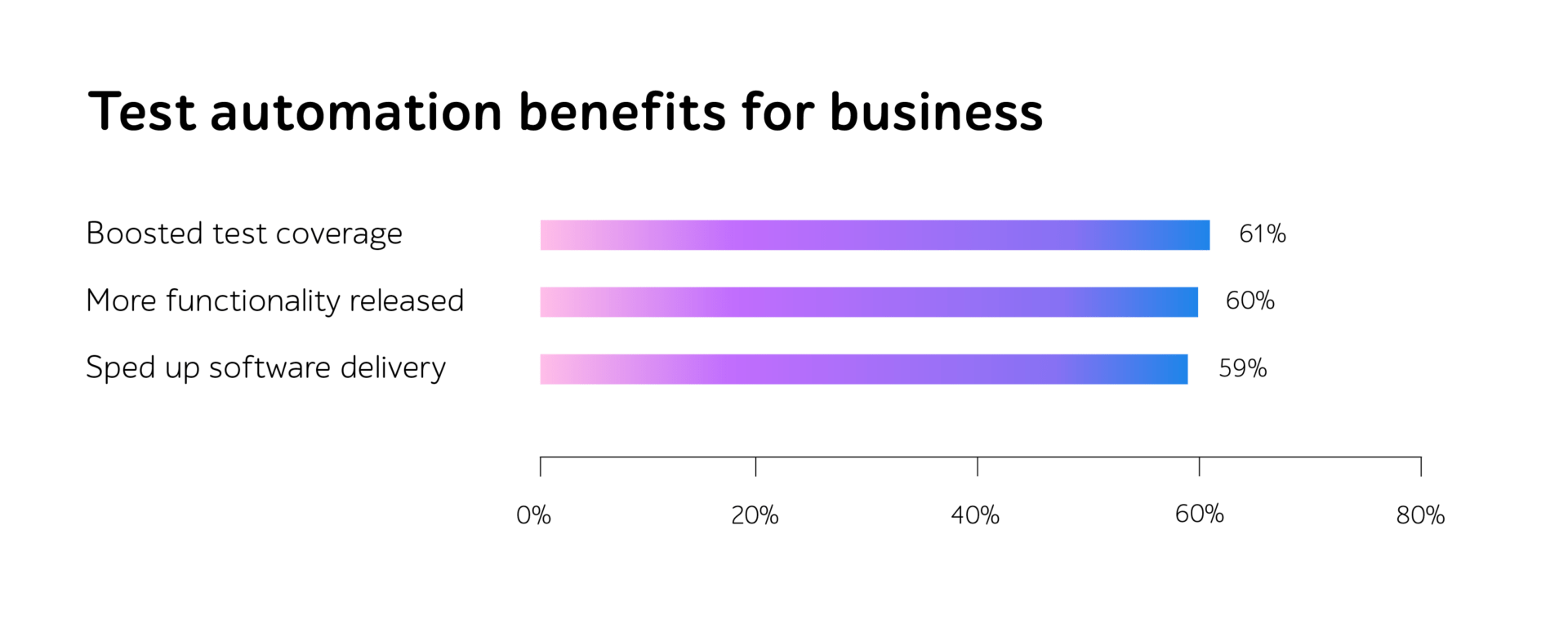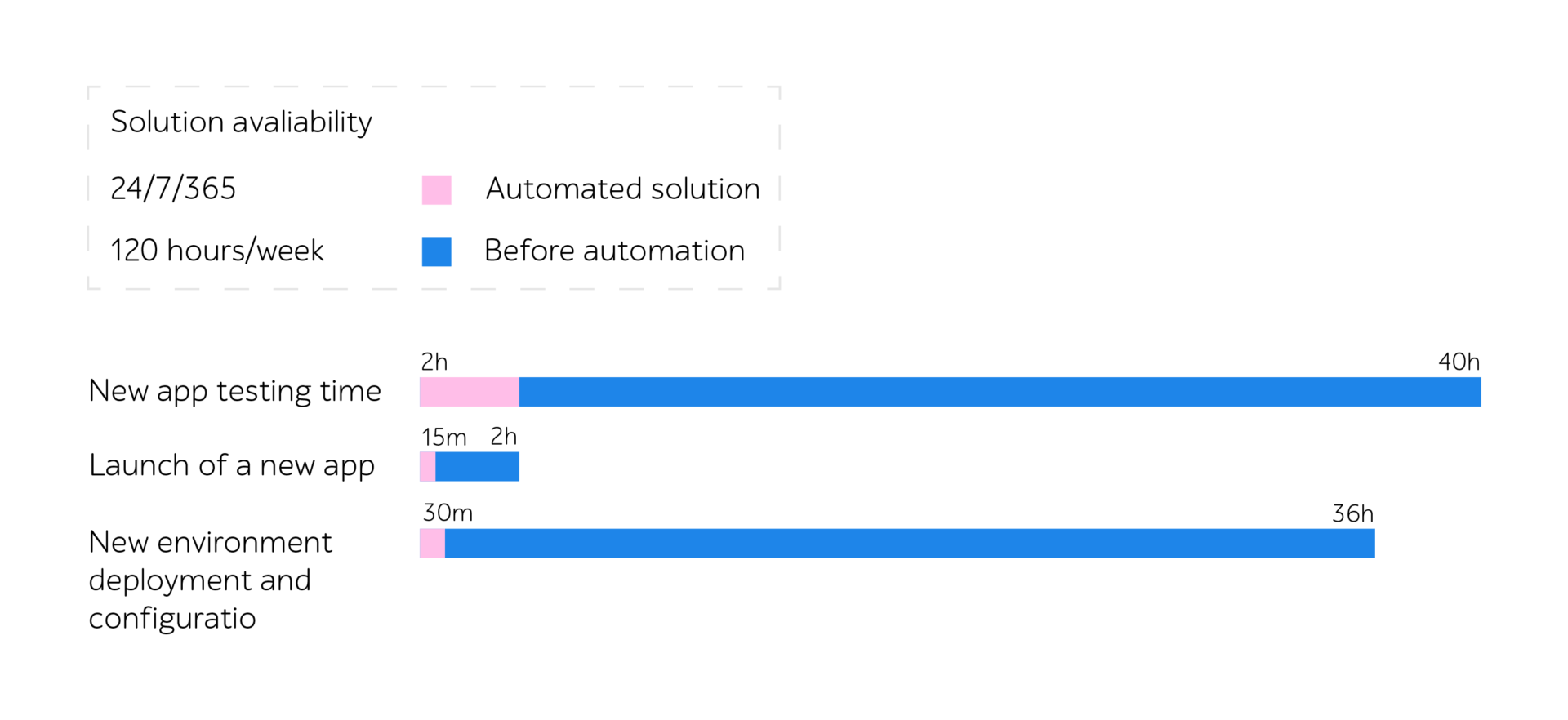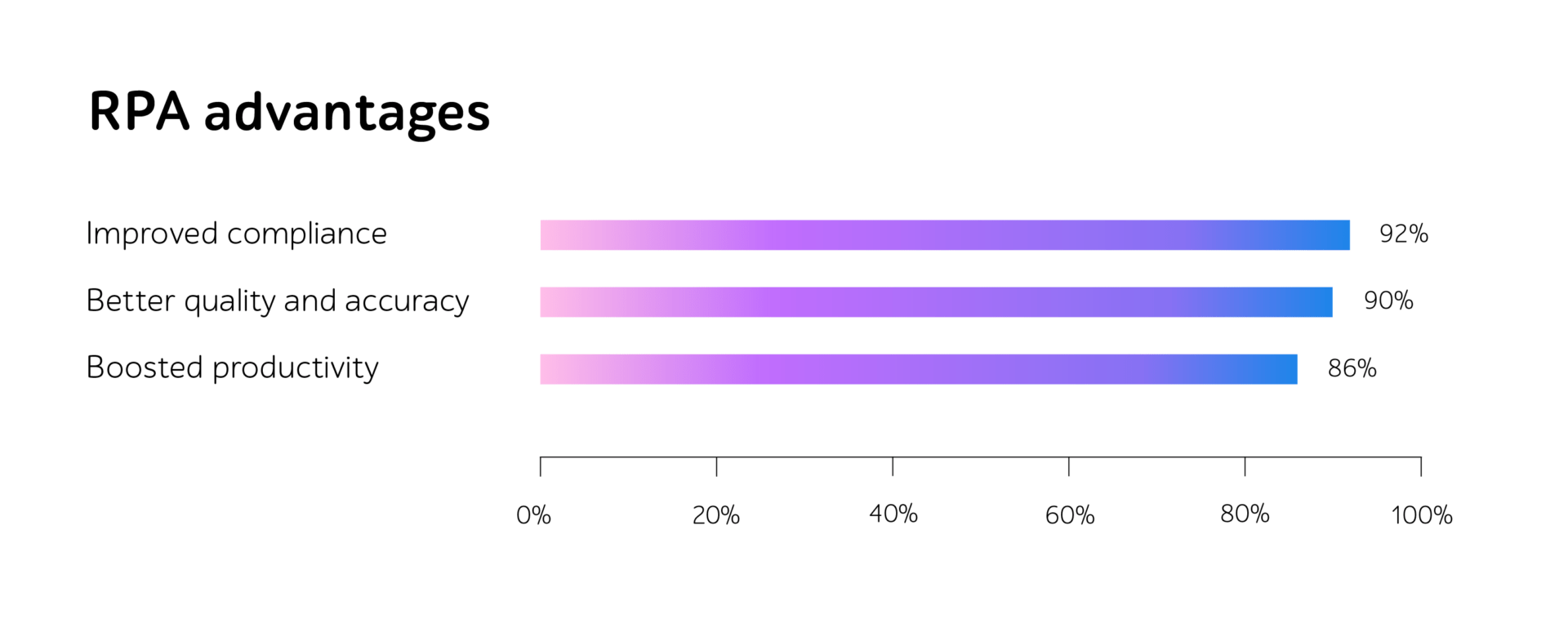
Streamlining software development life cycle through advanced test automation
As the need for innovative solutions grows, software development has become a race against time. To stay competitive and satisfy customer demands, organizations must deliver top-quality products rapidly. However, this urgency introduces hurdles that can jeopardize both quality and efficiency.
This is where advanced test automation steps in. Introduced carefully, it can bring multiple benefits for business. And statistics proves this fact. Respondents of the World Quality Report 2024-25 (WQR) state that they expect test automation to boost overall coverage, release more functionality, and speed up software delivery.

This article delves into the challenges created by the growing demand for faster delivery, examines how test automation can address these obstacles, and highlights transformative approaches that enable the delivery of robust, high-quality software at record speed.
Navigating current software creation hurdles
Striving to attain long-term success within a rapidly evolving digital landscape, companies may face several challenges that may negatively impact overall delivery life cycle.
First, project teams are often under market pressure to quickly roll out feature-rich flawless IT products. Such urgency can lead to rushed development processes, leaving little room for detailed testing. Poor-quality software, in turn, can have devastating consequences. Experts state that even one minute of downtime can cost $9,000.
Secondly, if organizations mainly stick to manual software testing, they can end up with lengthy quality control cycles, that will only increase with the accretion of IT product’s functionality. This is particularly noticeable when looking at regression testing that serves for validating frequent updates or end-to-end testing that is applied to verify the entire application flow.
Additionally, scaling QA efforts will also become more complicated in such circumstances as more QA specialists will be required to handle increased workload.
So, what’s the way out? Should companies sacrifice deadlines or compromise the quality of the final product? Neither should be considered. Test automation can become a game-changer.
By automating repetitive, time-consuming verifications, organizations regardless of the industry can iron out software issues and reduce quality control time.
For instance, with the implementation of a tailored test automation solution, a famous Japanese producer of software and hardware systems managed not only to ensure high quality of its self-checkout station but decrease regression testing time 22-fold. Or another example. By adopting automated workflows, a leading telecom company reduced testing time by 20x and achieved 72x faster deployment and configuration of new environments.

In addition, automated testing can help mitigate technical debt — the accumulated impact of quick fixes or outdated code that hinders progress — by improving development speed, reducing maintenance costs, and enhancing code quality.
Next-level test automation to optimize SDLC
With the obvious benefits of automated testing for attaining ultimate efficiency, let’s dive into the most impactful practices organizations may leverage for maximizing test automation potential, minimizing human intervention, and streamlining quality control processes.
- Generative AI (Gen AI)
The WQR respondents consider Gen AI to be the future of testing, and the levels of its adoption speak for themselves — 96% of interviewees are either actively using it in QA or planning to do so in the future, while Deloitte states that two thirds of the surveyed companies are ramping up funding for this technology.
In terms of automated testing, QA teams can leverage Gen AI to create test cases and realistic test data, which contributes to expanding test coverage and streamlining quality control operations. Additionally, it potentially can be leveraged to improve test maintenance experience due to analyzing any alterations in the software and adjusting scripts accordingly to conduct necessary verifications.
- No-code and low-code approaches
Low-code/no-code solutions — platforms that allow users to create applications or automate tasks with minimal or no coding knowledge — represent another aspect that organizations today may consider for enhancing their test automation efforts. 47% of the WQR respondents find this approach beneficial. The explanation for its popularity likely stems from the fact that it simplifies and speeds up test creation and execution as well as reduces costs associated with hiring or training specialized technical staff.
However, we still recommend that companies engage professional QA automation engineers to supervise certain technical tasks during the process of using low-code/no-code solutions, such as framework support, customization of test cases, and maintenance.
- Robotic process automation (RPA)
RPA technology leverages special bots to handle mundane, repetitive, and time-intensive tasks typically performed by humans, such as data input, processing paperwork, linking systems, assembling reports, and many others.
Deloitte’s Global RPA Survey states that over half of the respondents (53%) have embarked on their RPA journey, a number projected to grow to 72% in the years ahead. The most impactful advantages they obtain include better compliance (92%), quality and accuracy (90%), and increased productivity (86%).

As for test automation, RPA technology can also be used as an additional way to enhance efficiency, reduce manual effort, and streamline QA processes. For instance, bots can execute recurring scenarios within functional testing, support with configuring test environments and data, and ensure real-time tracking of KPIs to promptly identify and address anomalies or potential problems.
- Shift-left testing
By combining test automation with early identification and resolution of defects in the development cycle (e.g. starting from working with requirements), project teams can ensure frequent, consistent testing of any software changes and obtain immediate feedback on code quality. Early automated quality control reduces the cost and time required to fix issues compared to later stages.
For instance, due to introducing test automation and shifting left the testing of a multi-functional web portal, a UK-based real estate company managed to roll out sound software, accelerate the QA process, and significantly boost IT product’s performance.
- Service virtualization
This is a beneficial technique that simulates the behavior of all the features, APIs, databases, and other crucial elements of an IT product regardless of their readiness or availability at the moment, allowing QA automation engineers to access them round-the-clock and ensure continuous testing process without any downtime.
Consider an example. A billing system that is integral to multiple telecom software features becomes unavailable. In this case QA engineers are unable to test any dependent functionalities. By employing service virtualization, testers can simulate the billing system’s behavior, enabling them to verify associated functionalities without relying on the actual system’s availability.
Afterword
Embracing test automation enables organizations of various industries to refine their processes, achieve comprehensive test coverage, and maintain high-quality software delivery while keeping up with the speed required in contemporary development.
By supplementing test automation with advanced practices such as Gen AI, low-code approach, RPA, shift-left testing, and service virtualization, QA teams can maximize its potential and optimize SDLC.
Contact a1qa’s team if you need help with setting up automated QA workflows.








